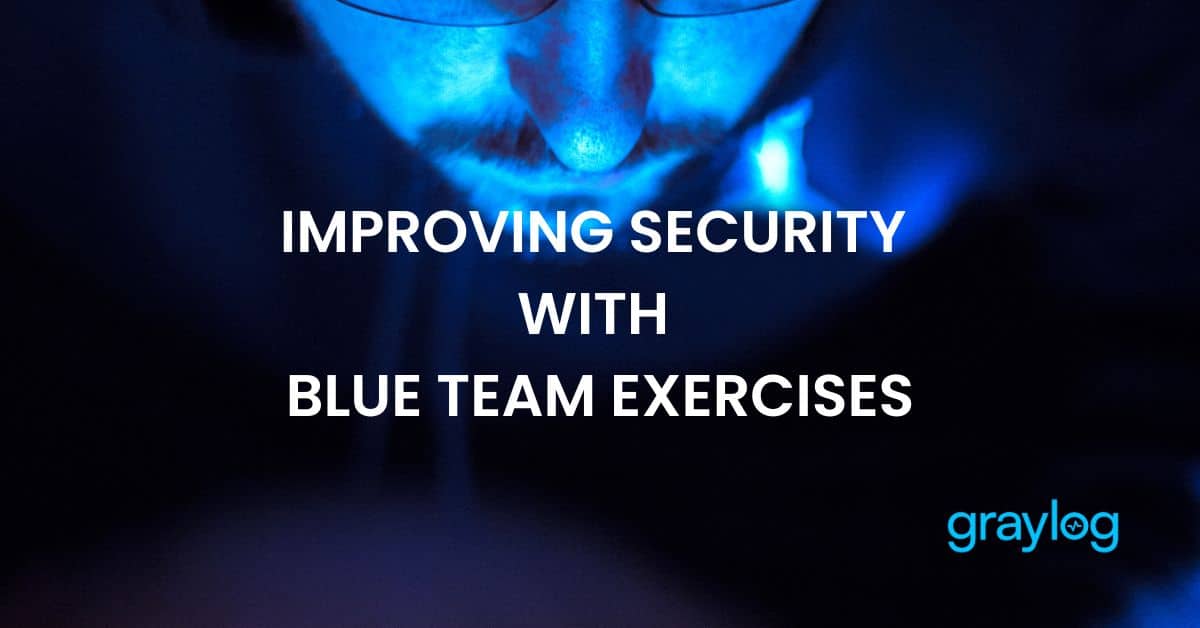In many sports, but especially soccer, a team has a set of offensive players and defensive players. The offensive players look for ways to compromise the opposing team’s defenses, seeking to get the ball in the goal. Meanwhile, the defenders work hard to push back against the opponent’s offensive line to clear the ball from the goal line.
On a security team, your defenders are the blue team. These are the security analysts who understand how to use your defensive security tools to mitigate the risk that threat actors can compromise your systems. Much like soccer players, your blue team needs to practice their skills and fine-tune their tools so that they can effectively and efficiently detect and respond to threats.
To improve your security, blue team exercises that help identify weaknesses and gaps across processes and tools.
Why Have a Blue Team?
A blue team is the shorthand name for the group of security analysts that defend the organization against cyber attacks. The blue team ensures that security controls work as intended. The blue team’s responsibilities typically include:
- Assessing security risk
- Monitoring for vulnerabilities
- Building threat detections
- Providing cyber hygiene training
- Responding to incidents
In addition, they are the analysts responsible for threat detection and incident response activities including:
- Detecting threats by creating high-fidelity alerts
- Investigating incidents by looking for indicators of compromise(IoCs)
- Mitigating and containing threats by engaging in activities like isolated infected devices, blocking malicious traffic, or terminating access for compromised accounts
- Eradicating threats by removing malware or backdoors and collecting forensic evidence from affected systems
What skills does a blue team need?
To be a blue team member, you need a range of skills across different security tools and control categories.
Network security
For companies that have a complex, interconnected, cloud-based environment, network security is increasingly important to defending against threat actors. Blue teams need to implement, enforce, and monitor different defensive controls to identify potential system vulnerabilities.
Understanding and applying threat intelligence
Blue teams use threat intelligence to anticipate and mitigate potential attacks. Threat intelligence provides insight into real-world attacker activities and IoCs so defenders. Typically, this information enables blue teams to take proactive steps to reduce risks arising from emerging threats or malicious actors targeting vulnerabilities.
Proficiency with security tools
Blue teams typically need to understand how to use security information and event management (SIEM) tools so they can create detections and security alerts. Additionally, they need to learn how to use and understand data generated by:
- Endpoint Detection and Response (EDR) tools for understanding threats to devices, like malware and ransomware
- Firewalls to control inbound and outbound network traffic
- Vulnerability scanners to identify security issues in operating systems, software, and firmware
- Network protocols for traffic analysis
Incident response
Blue teams need experience with detecting, documenting, and containing threats coming from unauthorized access to systems. Typically, they use simulations so they can practice:
- Communication and escalation skills
- Refine response processes
- Educate stakeholders, including senior management
What are the benefits of blue teaming?
Blue team exercises enable security analysts to enhance defensive capabilities by practicing cyber threat detection, response, and remediation skills. By simulating real-world attack scenarios, participants gain proactive threat awareness, allowing them to anticipate and prepare for potential threats.
Some primary benefits of blue teaming include:
- Real-World Readiness: Through practical incident response drills, teams are trained to efficiently handle actual cyber defense situations.
- Skill Gap Identification: These exercises highlight areas needing further development, ensuring team members receive the necessary training.
- Improved Operational Efficiency: They refine processes and encourage strong collaboration and communication among incident response teams.
What are blue team exercises?
Blue team exercise is the name of the simulated real-world attacks that give security teams experience defending their IT infrastructure in a safe environment.
The key aspects of blue team exercises include:
- A safe environment, sometimes using a specially designed cyber range.
- Simulated attack actions, typically mapped to adversary tactics, techniques, and procedures (TTPs) like those listed in the MITRE ATT&CK framework.
- Reviewing detections and alerts to ensure they adequately identify threats.
- Following incident response processes to test whether they work efficiently and effectively.
What is the difference between a blue team and red team in cybersecurity?
While your blue team acts as defenders, your red team tries to identify vulnerabilities, acting like attackers. The key differences between the two teams are:
- Main purpose: Blue team works on detecting and responding to threats while the red team simulates attacks to find weaknesses.
- Activities: Blue team monitors networks and mitigates attacks while the red team uses hacking techniques to breach systems
- Objective: Blue team works to strengthen the organization’s security measures while the red team works to test and exploit security gaps.
- Environment: Blue team works with real-time incident response tools to ensure they detect and alert on threats as intended while the red team uses a simulated, controlled sandbox so that their activities don’t disrupt business operations.
Why is it important for blue and red teams to work together?
Since red and blue teams manage the flip sides of an organization’s security coin, their collaboration enables the organization to have a well-rounded view of its security posture. This collaboration, often called purple teaming, provides insights as the red team tries to break into sensitive systems while the blue team works to keep them out.
By collaborating, the two teams improve the organization’s security and compliance posture. Most compliance frameworks and mandates include requirements about testing defenses and running tabletop exercises. Since the teams work in a controlled, low-risk setting, their collaboration enables them to identify potential security gaps and fine-tune security tools. Some benefits of this collaborative approach include:
- Improved Detection: Faster response times to suspicious activity.
- Enhanced Skills: Builds expertise in recognizing indicators of compromise.
- Strengthened Defenses: Identifies and addresses vulnerabilities.
Graylog Security: The Easy-to-Implement Blue Team SIEM
Graylog Security is the SIEM that security teams need without requiring them to make difficult decisions between usability, cost, and effectiveness. Graylog enables your team to maximize productivity while minimizing complexity, providing an intuitive UI and automation. With less daily manual effort, you can achieve your security objectives without guessing.
Our risk-based alerting enables you to focus on high-impact threats while our automated investigations enable you to respond to incidents faster. With our Threat Campaign Mapping, you can connect isolated alerts into full attack stories, enabling you to gain faster insights when threats attempt to compromise systems.
To see how Graylog Security gives you the SIEM that never asks you to compromise, contact us today.


